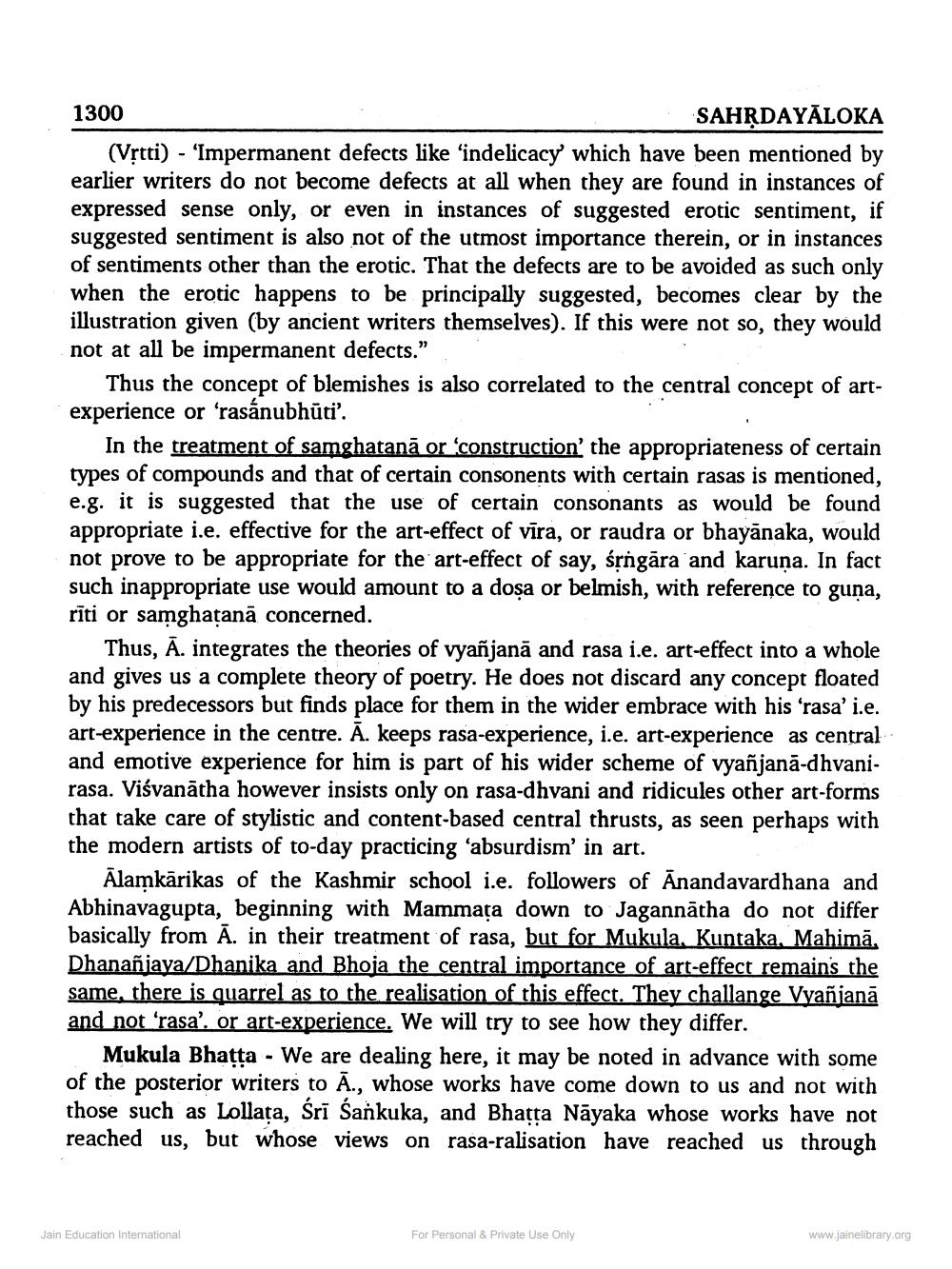________________
1300
SAHRDAYĀLOKA (Vrtti) - 'Impermanent defects like 'indelicacy' which have been mentioned by earlier writers do not become defects at all when they are found in instances of expressed sense only, or even in instances of suggested erotic sentiment, if suggested sentiment is also not of the utmost importance therein, or in instances of sentiments other than the erotic. That the defects are to be avoided as such only when the erotic happens to be principally suggested, becomes clear by the illustration given (by ancient writers themselves). If this were not so, they would not at all be impermanent defects.”
Thus the concept of blemishes is also correlated to the central concept of artexperience or 'rasanubhūti'.
In the treatment of samghatanā or construction' the appropriateness of certain types of compounds and that of certain consonents with certain rasas is mentioned, e.g. it is suggested that the use of certain consonants as would be found appropriate i.e. effective for the art-effect of vīra, or raudra or bhayānaka, would not prove to be appropriate for the art-effect of say, śrngāra and karuna. In fact such inappropriate use would amount to a dosa or belmish, with reference to guna, rīti or samghatanā concerned.
Thus, Ā. integrates the theories of vyañjanā and rasa i.e. art-effect into a whole and gives us a complete theory of poetry. He does not discard any concept fl by his predecessors but finds place for them in the wider embrace with his 'rasa' i.e. art-experience in the centre. Ā. keeps rasa-experience, i.e. art-experience as central and emotive experience for him is part of his wider scheme of vyañjanā-dhvanirasa. Viśvanātha however insists only on rasa-dhvani and ridicules other art-forms that take care of stylistic and content-based central thrusts, as seen perhaps with the modern artists of to-day practicing 'absurdism' in art.
Alamkārikas of the Kashmir school i.e. followers of Anandavardhana and Abhinavagupta, beginning with Mammata down to Jagannātha do not differ basically from Ā. in their treatment of rasa, but for Mukula. Kuntaka. Mahimā. Dhananjaya/Dhanika and Bhoja the central importance of art-effect remains the same, there is quarrel as to the realisation of this effect. They challange Vyañjanā and not 'rasa', or art-experience. We will try to see how they differ.
Mukula Bhatta - We are dealing here, it may be noted in advance with some of the posterior writers to Ā., whose works have come down to us and not with those such as Lollata, Śrī Śankuka, and Bhatta Nāyaka whose works have not reached us, but whose views on rasa-ralisation have reached us through
Jain Education International
For Personal & Private Use Only
www.jainelibrary.org




